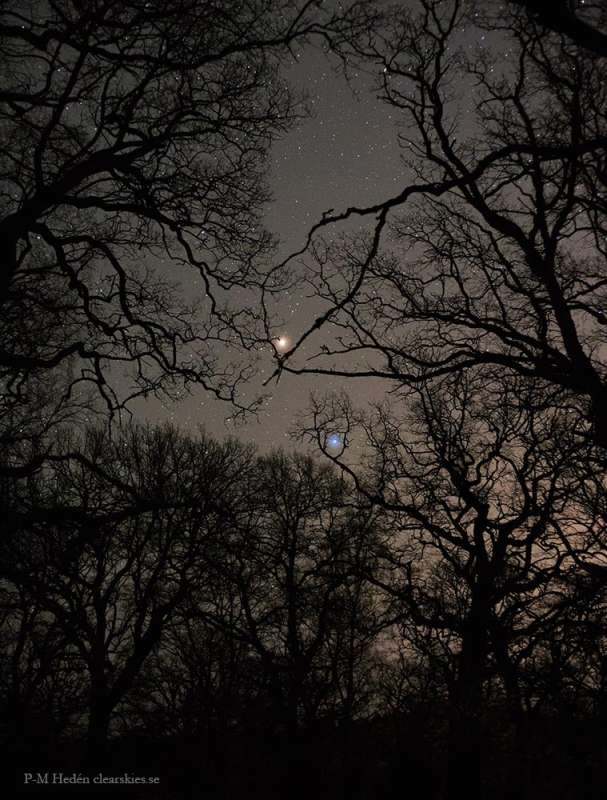
|
Credit & Copyright: P-M Hedén (Clear Skies,
TWAN)
Explanation:
A bright pair of sky objects will be visible together during the next few months.
Mars will shine
brightly in its familiar
rusty hue as it reaches its
brightest
of 2014 next week.
The reason that Mars appears so bright is that
Earth and Mars are
close
to each other in their long orbits around the Sun.
Spica,
on the other hand, shines constantly as one of the
brightest blue stars in the night sky.
Pronounced "spy-kah", the
blue-hued star
has been visible throughout
human history
and the sounds that identify it today date back to
ancient times.
Pictured above, the
planet and the star were photographed rising
together toward the southeast after sunset
last week
through old
oak trees in
Sweden.
Click Hyperspace:
Random APOD Generator
|
January February March April May June July August September October November December |
| ||||||||||||||||||||||||||||||||||||||||||||||||
NASA Web Site Statements, Warnings, and Disclaimers
NASA Official: Jay Norris. Specific rights apply.
A service of: LHEA at NASA / GSFC
& Michigan Tech. U.
Based on Astronomy Picture
Of the Day
Publications with keywords: Mars - Spica - trees
Publications with words: Mars - Spica - trees
See also:
- APOD: 2025 September 28 Á Leopard Spots on Martian Rocks
- APOD: 2025 July 15 Á Collapse in Hebes Chasma on Mars
- APOD: 2025 July 6 Á The Spiral North Pole of Mars
- APOD: 2025 June 29 Á Dark Sand Cascades on Mars
- APOD: 2025 June 22 Á A Berry Bowl of Martian Spherules
- APOD: 2025 June 15 Á Two Worlds One Sun
- Perseverance Selfie with Ingenuity
